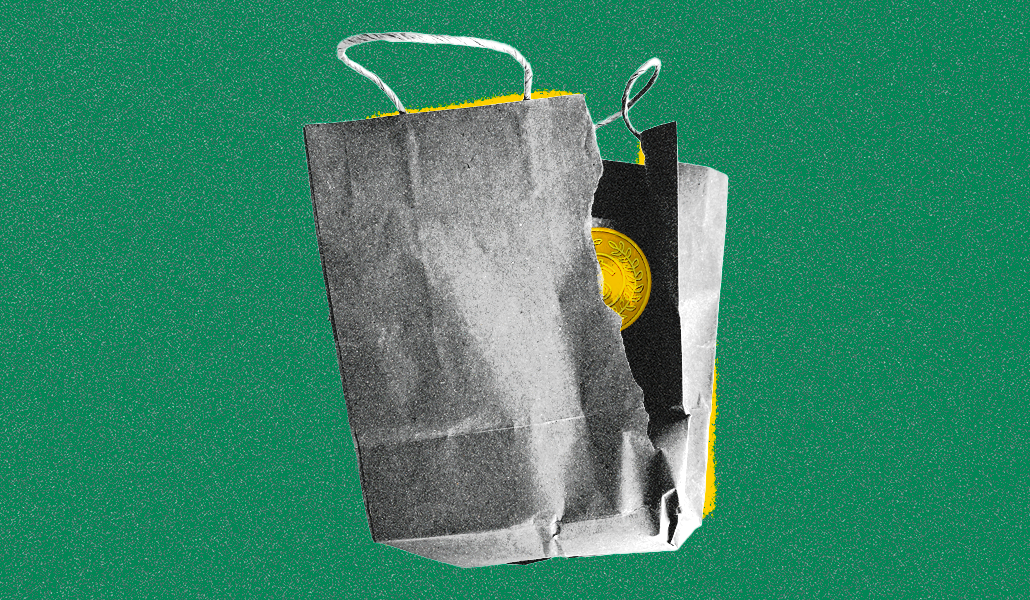Fashion
As demand for thrifted fashion grows, eBay hopes two-pronged strategy will defend market position

Amid rising consumer demand for secondhand fashion, the e-commerce platforms that helped create the online thrifting economy are working to tempt specific audience cohorts in the hope of coming out on top.
eBay launched a pincer movement aimed at British sellers last month, cutting fees for selling clothes on the platform to zero in a bid to out-compete rivals such as Vinted and Depop, while appealing to vendors with a new brand campaign.
In the U.S., the platform also faces off against ThredUp, Poshmark and TheRealReal. According to Nazia Du Bois, director of brand and marketing at eBay in the U.K., increased demand for digital reselling is “the rising tide that lifts all boats.”
“We want to make sure that the circular fashion economy is fueled further. Anything we can do to help that is a good thing,” she added. Its latest campaign, “Nothing to wear into something to love,” was created by marketing agency Dept and encourages fashionistas to clear out their old gear and refresh their wardrobe.
Of course, eBay would like its boat to rise a little higher than its competitors.
Internal eBay data shared with Digiday showed that the number of clothing and shoes with the keyword “thrifted” in the listing title rose 400% between March 2023 and March of this year, though a spokesperson declined to share what the baseline number of thrifted clothing products had been. But its proposition as the original, largest and most varied marketplace for vintage and pre-owned fashion has been under siege in recent years.
In Europe, Vinted has begun to gain momentum, recording a profit for the first time in its history in the first quarter of this year, according to its latest set of quarterly earnings. In the U.S., ThredUp hasn’t yet passed that milestone, but its executives expect to do so within the next twelve months; orders were up 9% in Q1, and it’s seeking to stand-out with investments in AI-enabled search, according to statements made to investors.
Vinted and ThredUp have successfully targeted younger consumers, relying on social platforms such as TikTok or Pinterest to boost their presence, said Blair Zimelis, director of consumer strategy at The Marketing Arm, an Omnicom agency specializing in cultural strategy.
She said that much of this increase has been driven by consumer inflation and affordability concerns.
“Pre-loved clothing makes luxury items accessible, especially as the price of new luxury goods continues to rise. Consumers are turning to secondhand clothing to find these items at a lower cost, while making money from their pre-owned items,” Zimelis told Digiday.
Du Bois agrees that demand for pre-owned fashion has been driven by cost of living concerns, though she also cites sustainability concerns. “It’s two-pronged,” she said. “The average person in the U.K. has really felt the pinch over the cost of living crisis in recent months. And people are more conscious of the overall supply chain behind their consumption decisions.“
In contrast to its youth-focused rivals though, said Anna Pompilio, cultural strategist for branding agency Marks, eBay is the “grandfather of the secondhand online retail space.” And although macroeconomic conditions are in its favor, “the climate surrounding eBay has changed,“ she said.
eBay is attempting to shift with that climate; at the start of the month, it unveiled a buzzy Met Gala partnership intended to catch the eyes of fashion-forward zoomers. Du Bois said that in addition to TV and audio channels it’s focusing on paid social and influencer partnerships as well as TV, video-on-demand, audio and digital display, though she declined to share how much budget was being put against each channel.
But eBay doesn’t just want to sharpen its fashion credentials to shut out the competition. Clothing is a gateway to buying other items on the site, said Du Bois, who cited internal data which showed users that came to the site to buy clothes were more likely to return for other items than users that had arrived via other routes.
For eBay, 47% of pre-owned items sold in the U.K. were apparel. But ensuring it has a wide and deep stock is key to holding its own against smaller rivals and converting casual customers into habitual shoppers.
”Fashion is a really important gateway category for us. When people come to eBay to buy fashion they’re more likely to also explore other categories, to go from buying a jumper or a dress to looking at something in home and garden or something in parts and accessories,” she said.







:max_bytes(150000):strip_icc()/roundup-writereditor-loved-deals-tout-f5de51f85de145b2b1eb99cdb7b6cb84.jpg)


